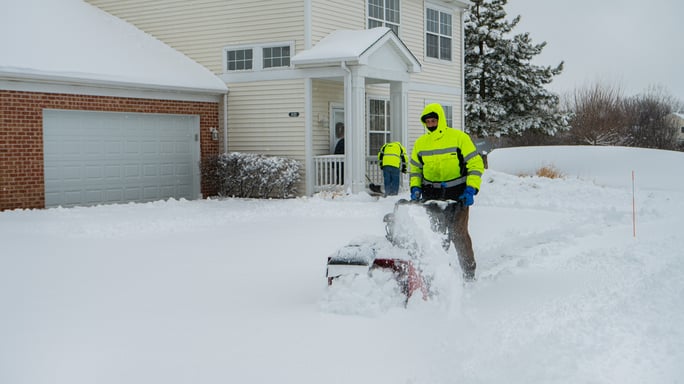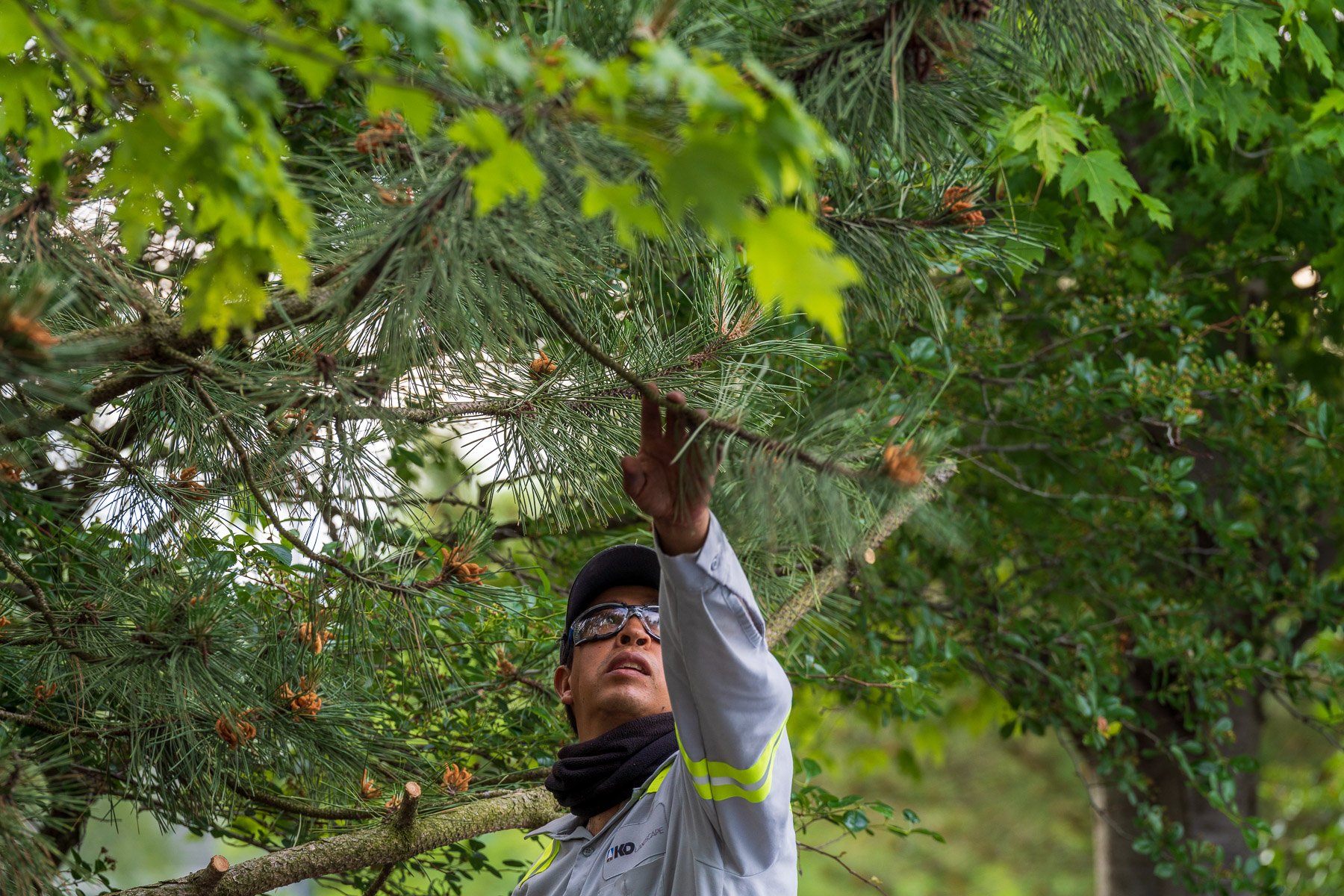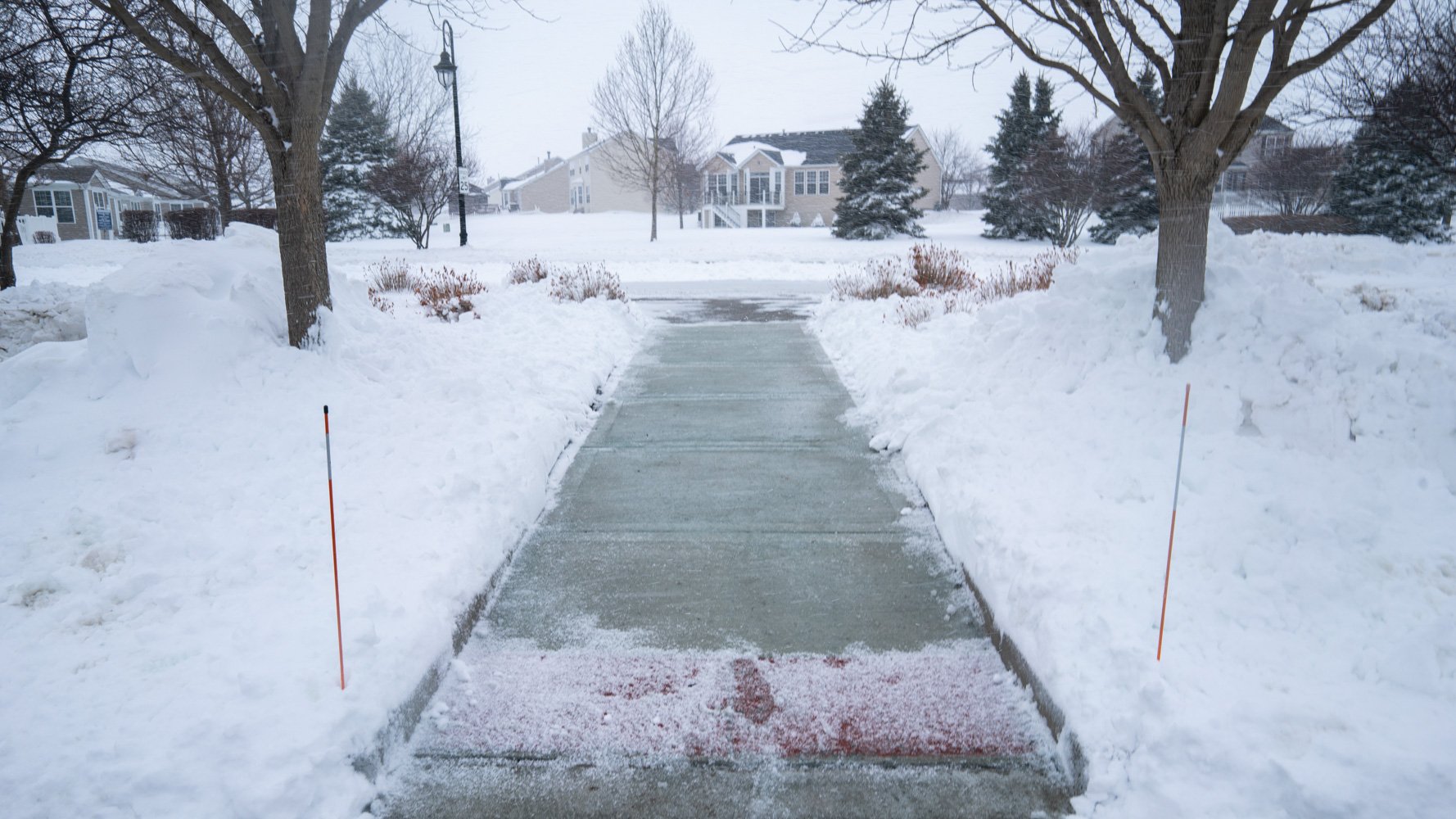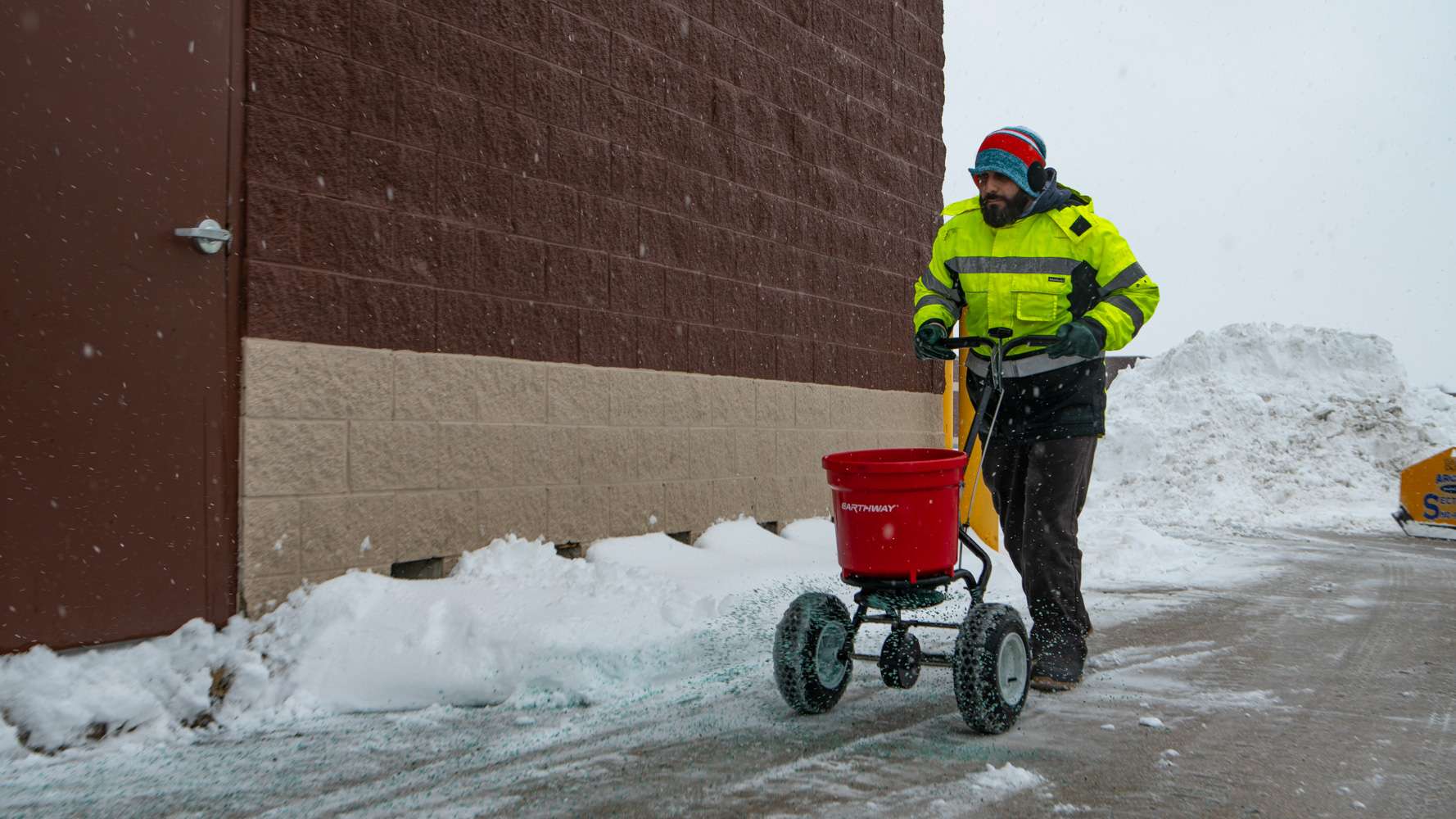Winter’s cold weather, snow buildup, and ice can cause significant problems for your commercial property, which you’ve invested time and money in. The wind and freezing temperatures may result in building damage, utility outages, and temporary closures or delays.
No facility manager wants to face these issues.
Your Greater Chicago commercial property requires special winter maintenance. To avoid property damage from snowplowing and ice removal, coordinate with your snow removal company beforehand. There are steps you can take before the snow accumulates to keep your property safe.
Let’s explore winter landscape damage and how to prevent it during routine snow and ice removal.
6 Tips to Prevent Snow Plow Damage to Your Commercial Property
If you don’t prepare for heavy snow and ice, you can risk damage to landscapes, utilities and structures that come during the snow removal process.
If you don’t prepare for ice buildup, you can risk slips and falls, as well as flooding when that ice melts.

If you don’t ready your hardscape for the repeated freeze-thaw cycles, it may heave or crack, creating hazards for pedestrians on your commercial property.
Similarly, turf requires proper preparation; otherwise, it can suffer from snowplow damage, salt burn, or snow mold.
The way to avoid these issues is to prepare your commercial facility to prevent winter landscape damage properly. This gets you through the rough season, so come springtime, you have a great-looking property.
Avoid unsightly damage and costly spring repairs. Try these winter-preparation tactics to protect your commercial landscapes.
1. Flag Snow Removal Obstructions Before Winter
Any object protruding from the ground that can be hidden by snow may pose a hazard to your commercial snow removal team.
For example, water meter covers or utility hardware can easily be buried under piled snow and are susceptible to damage from snow removal equipment. Additionally, piled snow can conceal surface irregularities in paved areas.
When a snowplow passes by, even a slight edge, like a concrete walkway that sticks up an inch or two, can be struck, leading to damage.

To prevent winter landscape damage, it is helpful to do a pre-winter walk-through with your commercial snow removal professional. This allows them to identify and mark risks using snow stakes or safety cones.
Being aware of these hazards enables your snow and ice removal team to avoid them, saving you the trouble and expense of spring repairs.
2. Highlight Paver Surfaces Like Walkways and Courtyards
Make sure to show your commercial snow and ice removal professional any paver areas you have that need to be cleared during winter.
Interlocking concrete pavers enhance any landscape with their aesthetic appeal.
Although more resilient than pavement or poured concrete in many respects, snow removal equipment can cause issues quickly. Unlike poured surfaces, concrete pavers feature numerous edges and seams vulnerable to cracking or uplifting from plow blades.
To prevent winter damage, rubber-edged plow blades are recommended, as they offer more flexibility than steel blades, allowing safe clearing without significant damage.
Additionally, concrete pavers are particularly prone to salt damage, similar to asphalt. Teams applying calcium chloride to concrete walkways and paver surfaces should treat them likewise.
Before winter begins, inform your snow removal team about all paver walkways, patios, and driveways to ensure proper care and communication.
3. Prune Potentially Hazardous Trees & Shrubs Before Winter
Properly pruning the trees on your commercial property in Greater Chicago means removing dead, diseased, dying, or damaged branches regularly.
These are the branches and limbs most susceptible to falling and causing further damage to your property or to the people who navigate your site every day.
While these branches can cause problems throughout the year, the additional weight of snow and ice can stress them to the breaking point. This is especially hazardous near areas of heavy foot or automobile traffic.

By keeping up with tree pruning, you can clear out potential problems in your planting beds and avoid costly damage or danger to buildings, cars and pedestrians below.
4. Mark Pavement Edges with High-Visibility Snow Stakes
While you can mark potential snow removal hazards with flags, you want to protect your entire landscape from potential damage.
For long walkways, or roadside turf and planting beds, marking the edges of pavement with snow stakes is the best way to prevent snow removal damage to long stretches of your landscape.
To keep track of turf edge lines and other hazardous or sensitive areas on your commercial site, you can use snow stakes to alert your snow and ice removal professional that something is there that the snow plow should avoid.
Most snow removal takes place overnight, when traffic is minimal, and it is easiest to do. In the dark and buried by snow, the edge where pavement meets landscape becomes obscured even after minor snowfall.
Tall, high-visibility snow stakes alert your snow removal teams to these critical edges, helping keep turf and landscape damage to a minimum.

Traffic cones also help highlight areas like driveway or entryway speed bumps that snowplow drivers may miss once covered in snow. It’s a simple preparation step that can help you avoid much winter landscape damage.
A good snow removal company will even provide and install these markers for you before the season begins.
5. Plan For All Types of Snow and Ice Events
You want to ensure your commercial snow removal professional is ready for the season with enough salt and deicing products to handle whatever ice accumulates.
It's important to understand that not all winter weather events are the same, and your snow removal provider will approach different events accordingly.
Your snow removal provider will get ready for a blizzard much differently than a potential dusting. Heavier events will be more about removal than treatment, while dustings can sometimes be handled by salt and de-icer alone.

Sleet and ice events may also require specific preparations, such as pre-treating, that might not be needed for other types of winter accumulation.
Heading into a winter weather event with the wrong products, equipment or manpower can lead to damage to landscapes and structures that would not occur otherwise.
These products and techniques prevent ice build-up on walkways, paths, entryways, and sidewalks, ensuring your customers, employees, visitors, and guests can safely access your building.
If you have a large site, you might even have an agreement with your professional grounds management company that enables you to store salt and deicing products on your property, so it’s right there when needed. This little bit of preparation goes a long way toward avoiding winter landscape damage caused by ice.
If your site is large enough, you may even include provisions in your contract to keep larger equipment on site, such as skid-steer loaders, to streamline snow and ice management services even further.
In your snow removal contract, this can be called a monthly “ready fee” that ensures equipment is ready to use when needed.
6. Ice-Melt Variety May Be Necessary To Avoid Rock Salt Damage to Concrete
There are two types of ice melt products commonly used in Greater Chicago: rock salt and calcium chloride.
Rock salt is sodium chloride - the same thing as common table salt. It is readily available except when extreme and extended winter weather has caused local shortages, and it is relatively inexpensive.
While it's very effective on roads and parking lots, rock salt has its drawbacks. It can be very harmful to some plant life if used too close to landscape beds or in excess.
In addition, concrete surfaces can become pockmarked, discolored and more prone to cracking if subjected to significant salt coverage.
To protect plants, salt runoff from snowmelt or rain should be managed as much as possible. Because of its potential to damage plants, using it on large, open areas like parking lots is the best way to protect against unsightly, expensive plant and turf damage.

Using calcium chloride can help you avoid rock salt damage to concrete. This product can be less harmful to plants than other deicers, but you still want to use it properly (it has no benefit as a fertilizer). By the end of the snow season, calcium chloride can also become quite expensive.
When it comes to understanding the differences between these two ice-melting products, your commercial snow and ice removal professional can help you determine what’s best for your property based on your specific needs and goals.
Don’t Neglect Preparation to Avoid Winter Landscape Damage on Your Commercial Property
It may be hard to envision all the snow and ice piling up on your site and what will or won’t be visible once it shows up.
A walkthrough and some simple preparation steps can help limit winter landscape damage.
We know you’re busy, and you may have no time to get to this task. Let KD Landscape help. By preparing early, you can save time, money, and headaches through winter and into spring.
Want to learn more about our winter commercial property preparation service in Greater Chicago? Get started today with an on-site consultation. We’ll review your options together so you can feel confident and make a great choice.







